Prisca Visser is a photographer with a love of the outdoors and nature. For the Biesbosch Line, she regularly goes out to capture stories. This month she discovers traces of the Cold War and gets a tour of Fort Altena.
Prisca Visser is a photographer with a love of the outdoors and nature. For the Biesbosch Line, she regularly goes out to capture stories. This month she discovers traces of the Cold War and gets a tour of Fort Altena.
The war that just did not want to become a war, but created enormous tensions and citizens' fear of a Third World War. The period between 1945 and 1991 is also known as the Cold War. What was it like again? After the end of World War II, there was a kind of power vacuum. Major powers such as Germany, France and also Britain had taken quite a hit. As a result, the U.S. and the Soviet Union came to face each other. Between these parties there were huge differences in the future image and policies of liberated territories and this caused friction. Germany got split up and in 1961 the Iron Curtain was created to prevent people from defecting from East Germany to the Western part. A wall was built in Berlin. In response, NATO was created. An alliance between Western countries to form a fist against the Eastern Bloc. And that NATO set up a huge secret operation. The stay behind operation Gladio. Hundreds of civilians were involved in this resistance against the Eastern Bloc. Should it come to an invasion, at least we were prepared. What this operation has to do with Altena, I'm going to show you in this article.
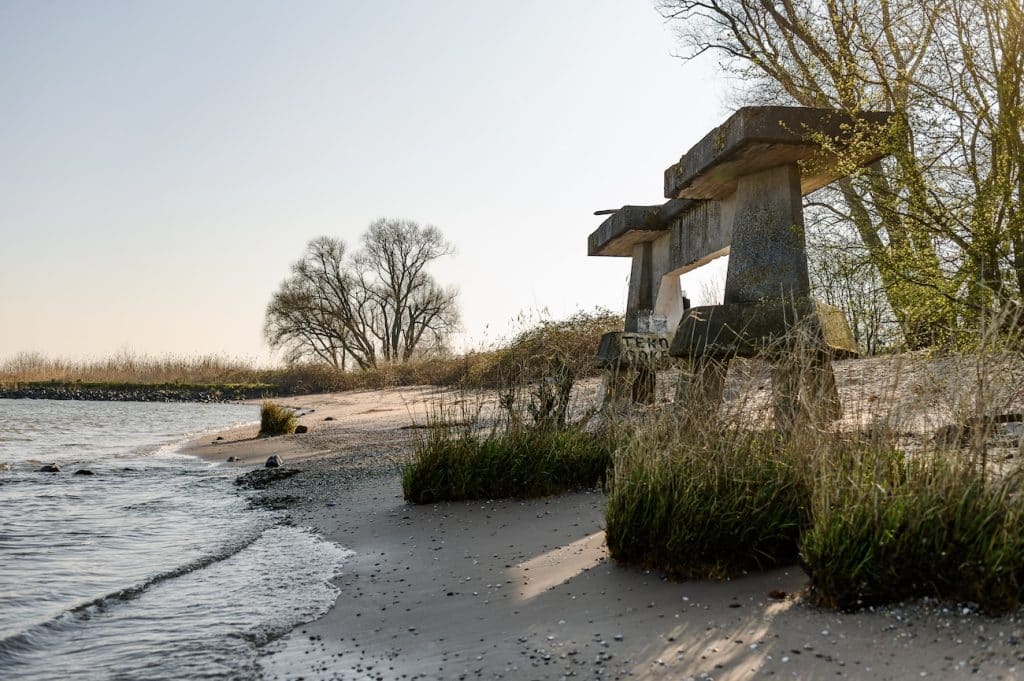
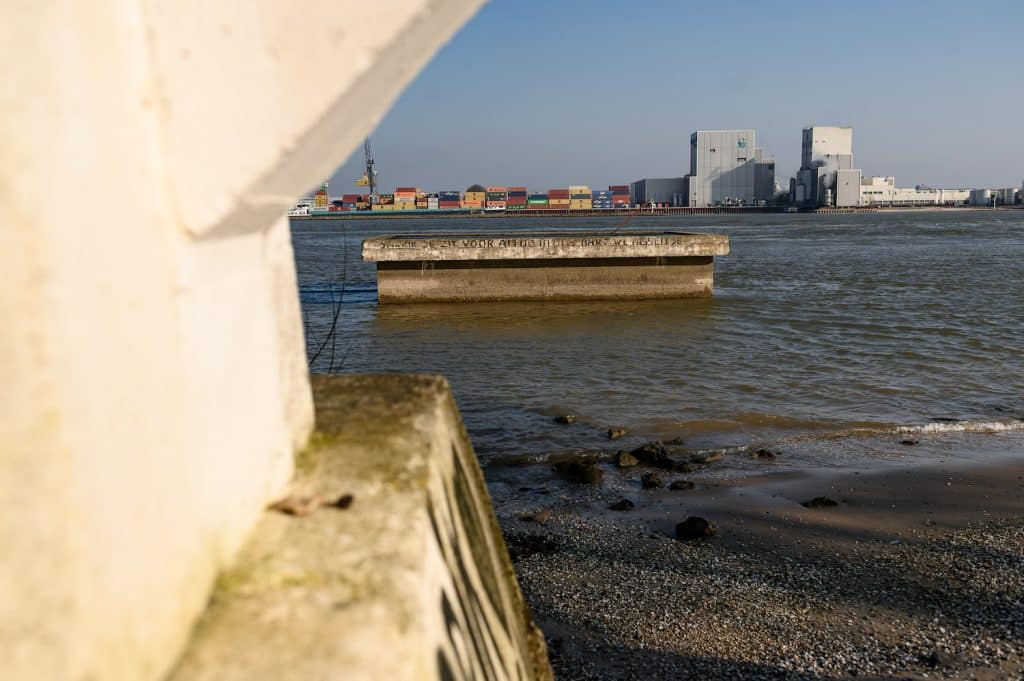
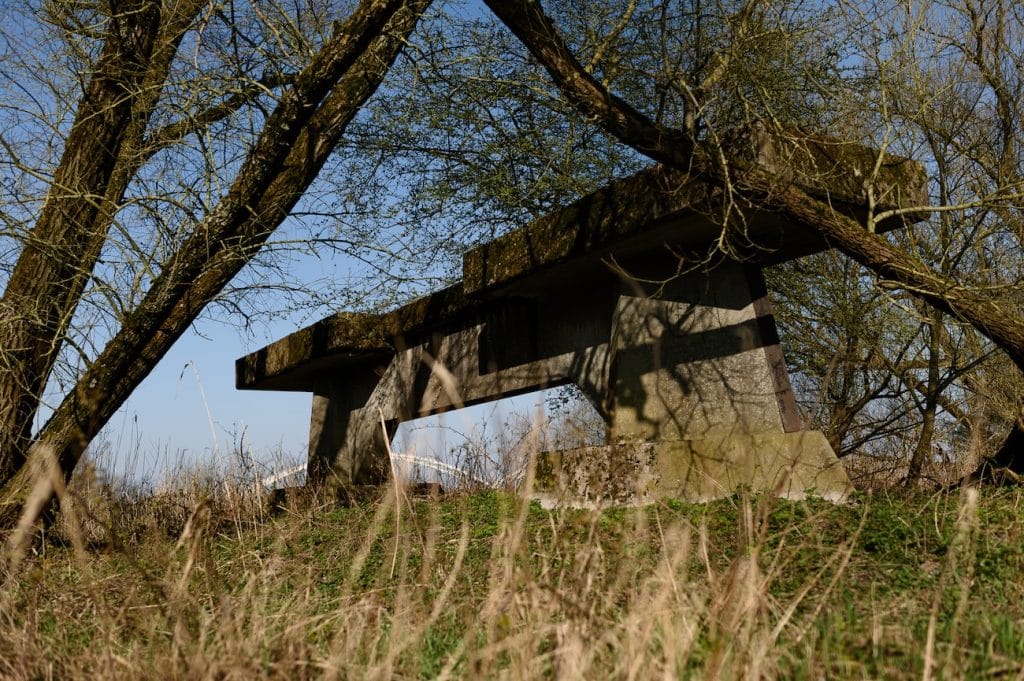
For a large army to cross the Upper Merwede quickly, a bridge was needed. Recall that the Gorkum Bridge was not there then! NATO ordered the construction of a kind of emergency bridge in 1954. Huge concrete piers were built on both sides of the river. The moment it would be necessary, the army could build a bridge over it in no time. This construction is called a bailey bridge, actually it is a kit of elements. At the dikes in Sleeuwijk and Gorinchem, a few hundred meters of bridge was built on both sides, with a floating bridge section in between. The pillars of this NATO bridge can still be seen on the Sleeuwijk side. On a crisp but sunny morning, I go to take a look at these remnants of the Cold War.
A narrow path leads down the dike and winds into the Sleeuwijkerwaard nature reserve. It is not long before I encounter the first pillar. A mighty concrete structure in the middle of the greenery. Quite impressive. I count eleven of them, the last one standing on a sloping beach by the river. Some are overgrown by nature, others are easy to see. Once such a bridge was built, it could take a tremendous amount. Heavy trucks, military vehicles ... none of it mattered. Eventually the threat of war weakened and the NATO bridge was never actually used. What we do know is that it was also tested once. So there definitely was a bridge here, and that's not at all as long ago as you think!
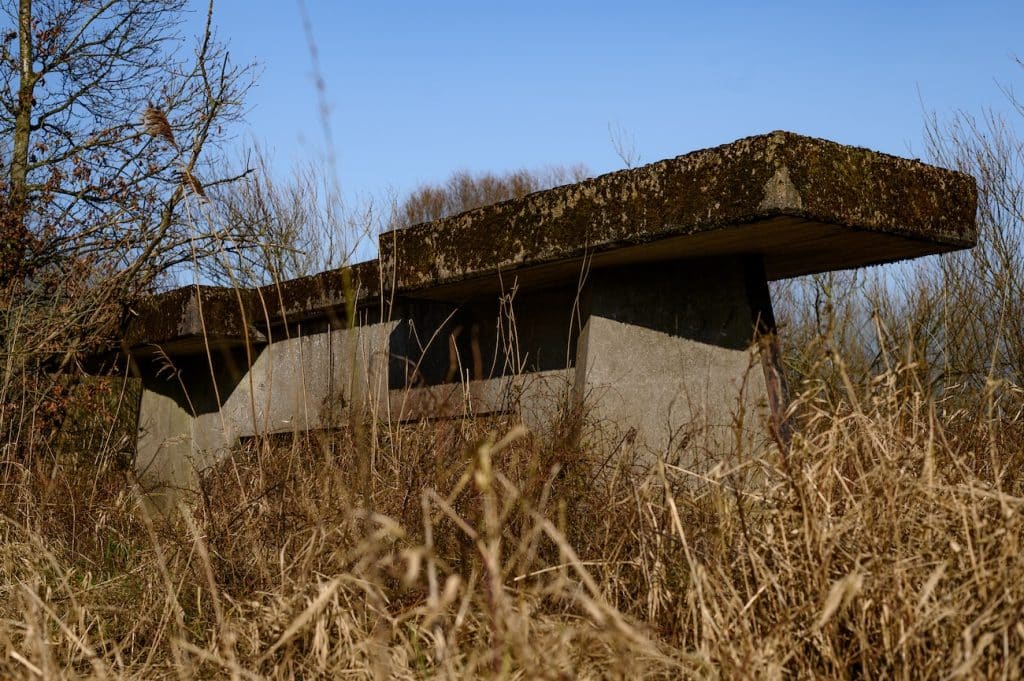
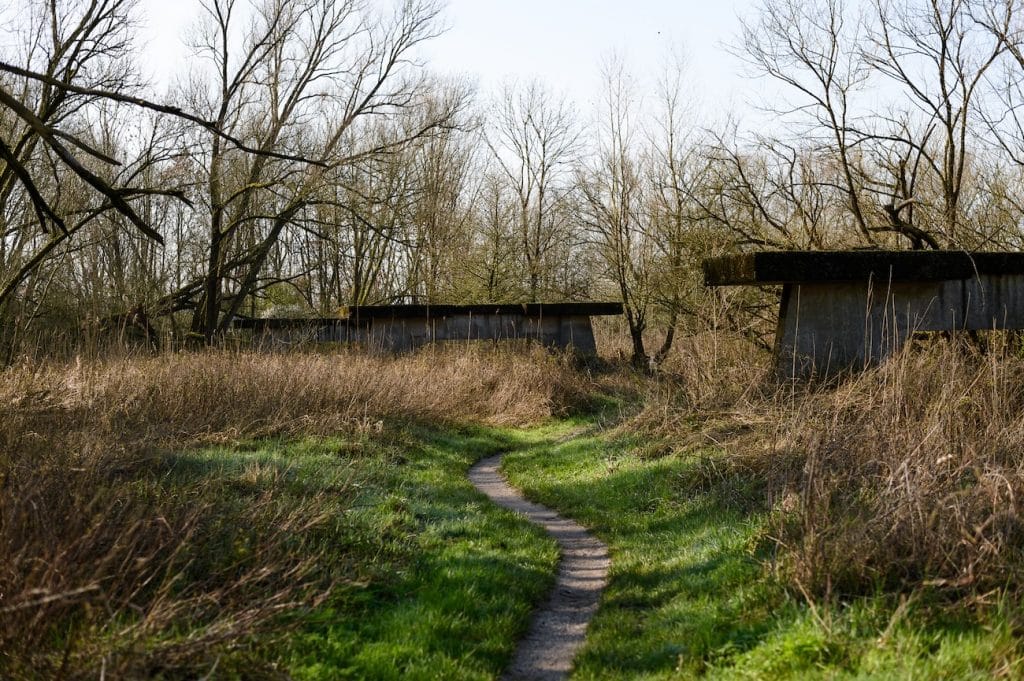
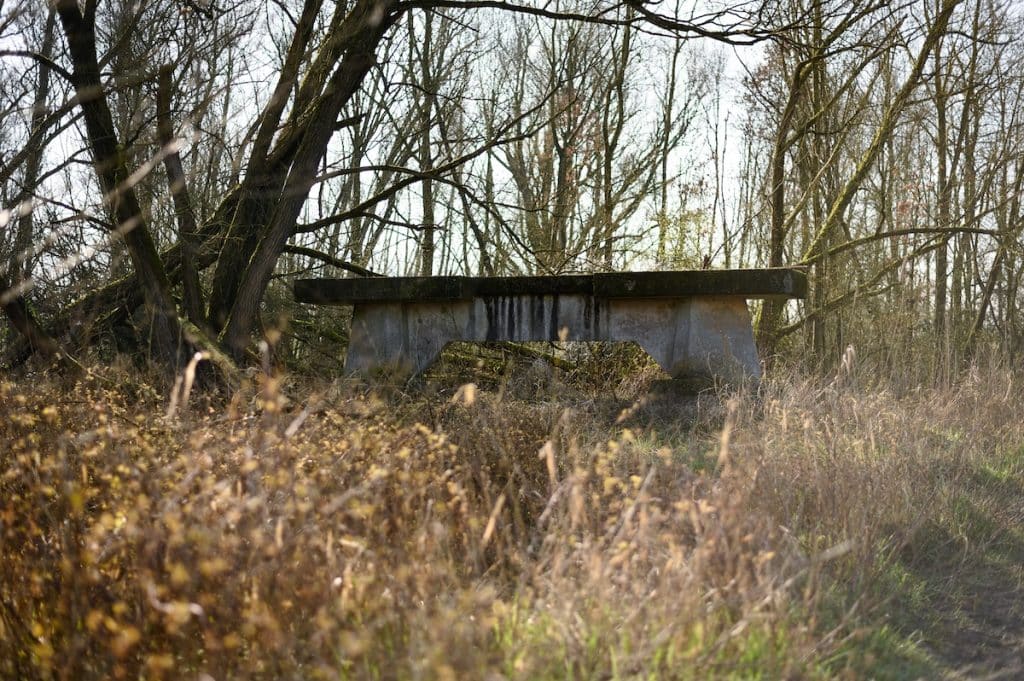
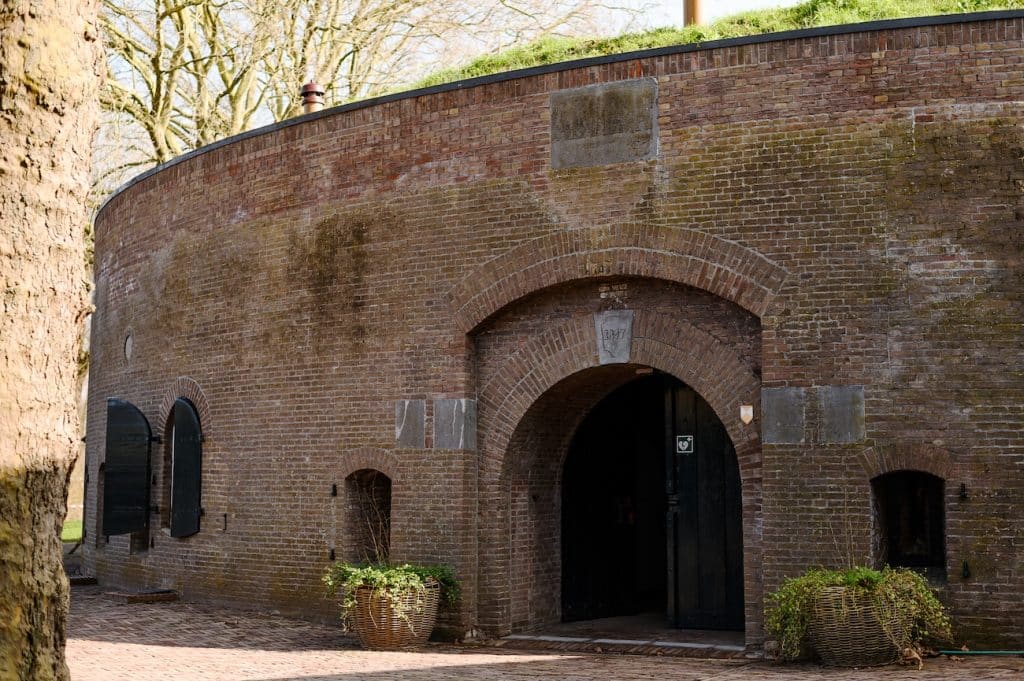
A bailey bridge was basically an Ikea package. All these separate parts had to be housed somewhere nearby. The Army found a solution to that. Within shooting distance was the Fort on the Uppelsche dike. There was enough space on the site and three large sheds were built. These so-called "Mob sheds" probably housed the bridge parts and other war material, such as ammunition and army trucks.
It didn't stop there. The fort itself was put into use for a very secret operation. Today I am meeting with Arie Schouten, who is a guide at Fort Altena and will tell me more about it.
A firm handshake and a big smile breaks through on his face as Arie welcomes me to the hospitality area of Fort Altena. It used to be called "the fort on the Uppel dike," he starts right away. "The round part was built first, the so-called tower fort. In 2001 Brabants Landschap became the owner, when they handed over the keys from defense, we discovered some peculiarities here. Come along and I'll show you". We walk into the daylight toward the large, circular building which lies in the center of the fort. A passage gives access to a small circular courtyard. Through a glass door, we walk into a small room. Several doors follow, each giving access to unique rooms. "Look, here you can clearly see that a concrete floor has been poured in," Arie continues. "That floor was made much more recently than the construction of the fort itself. We also found electricity, telephone connections and even fluorescent lighting! At the time of the Cold War, this was a base for the stay-behind operation Gladio. Messages were collected here, data stored and information relayed over the phone. Look closely at the doors. This does not fit an old fort at all". I see typical sixties door handles, the round shapes, the color. It would fit in a house from fifty years ago. But to find this in an old fortified town? No, I didn't expect that. "We still have a lot of questions," Arie continues. Will we ever find out? I have no idea. All the documents related to this are still not public; this archive is closed by the government.
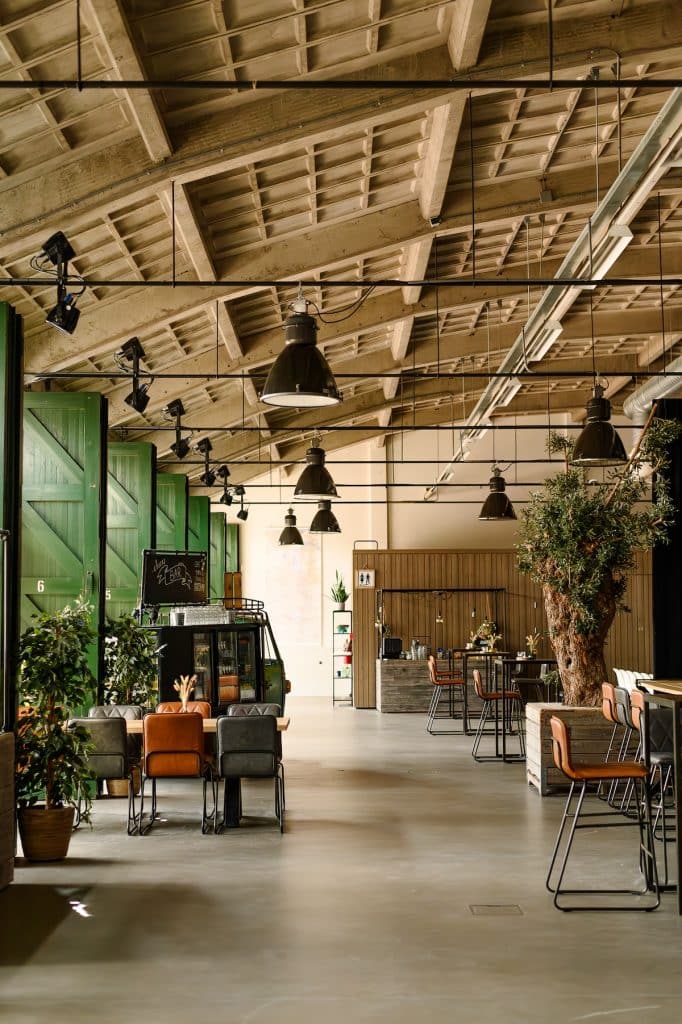
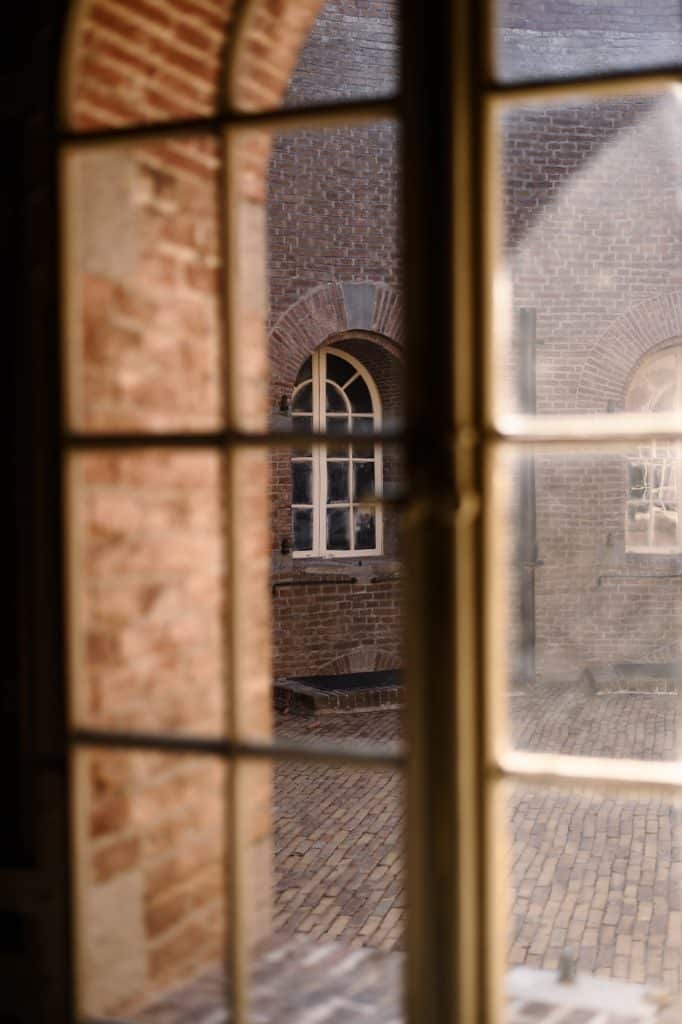
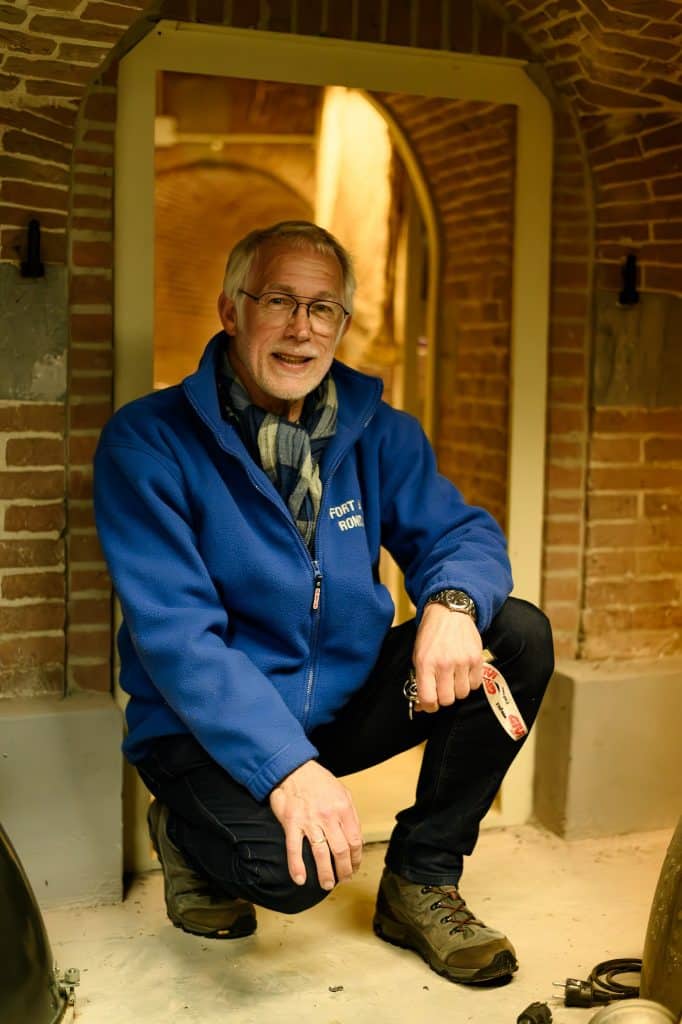
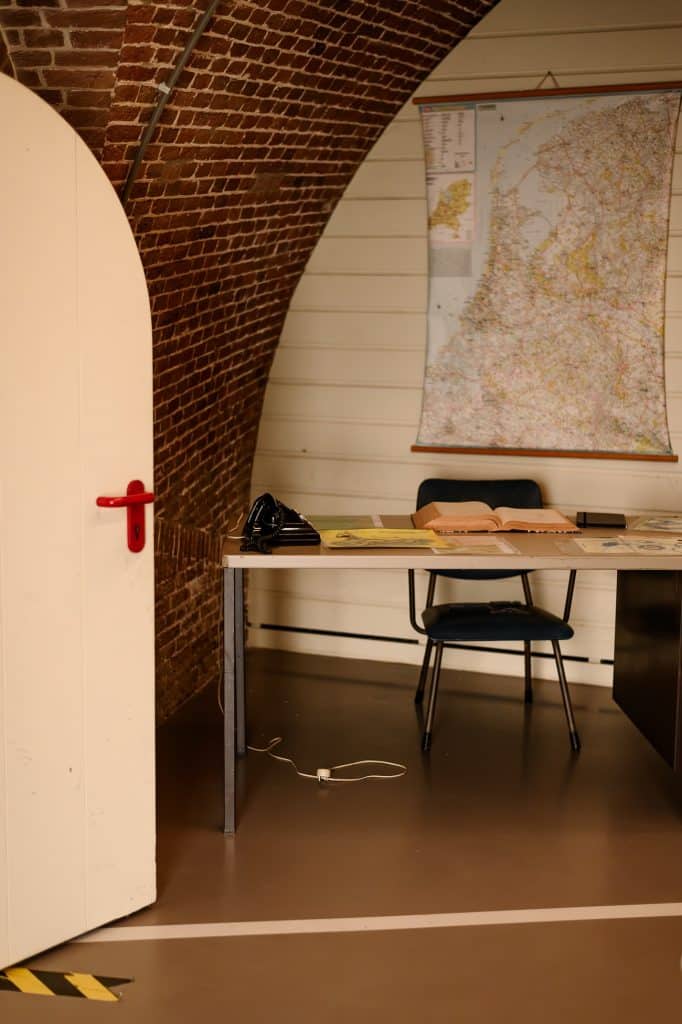
There is something else I need to see. Outside on the grounds, right next to the fort is an old shooting range. In the grass , Arie has laid down two square garden tiles. "Those are the 50 and 100 meter distances," Arie continues mindfully. In a concrete basement sat a few people who could move the shooting targets up and down. If there was shooting, they would take the target down and report back to the commander what the results were. Not a pleasant job, if you were down there the bullets could fly around your ears. Perhaps it was also a bit boring at times, as we see multiple notches in a wooden beam. "March 18, '55," I can decipher with difficulty. The secret operation Gladio involved civilians. These had to keep quiet at all costs, even their family members often knew nothing. To train these people in the use of firearms, this shooting range was probably used.
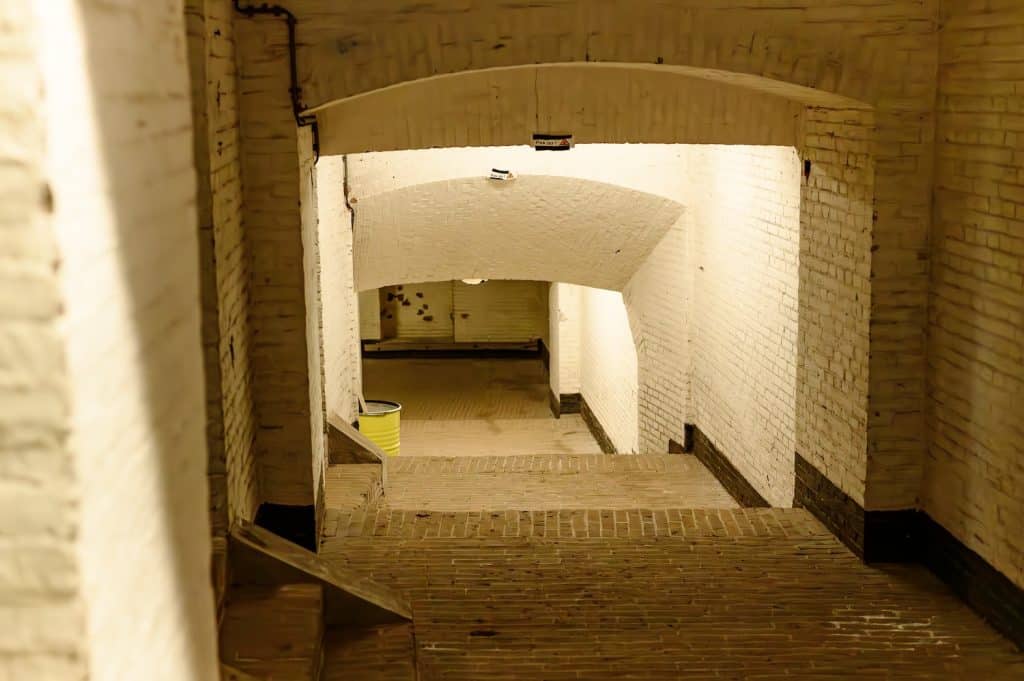
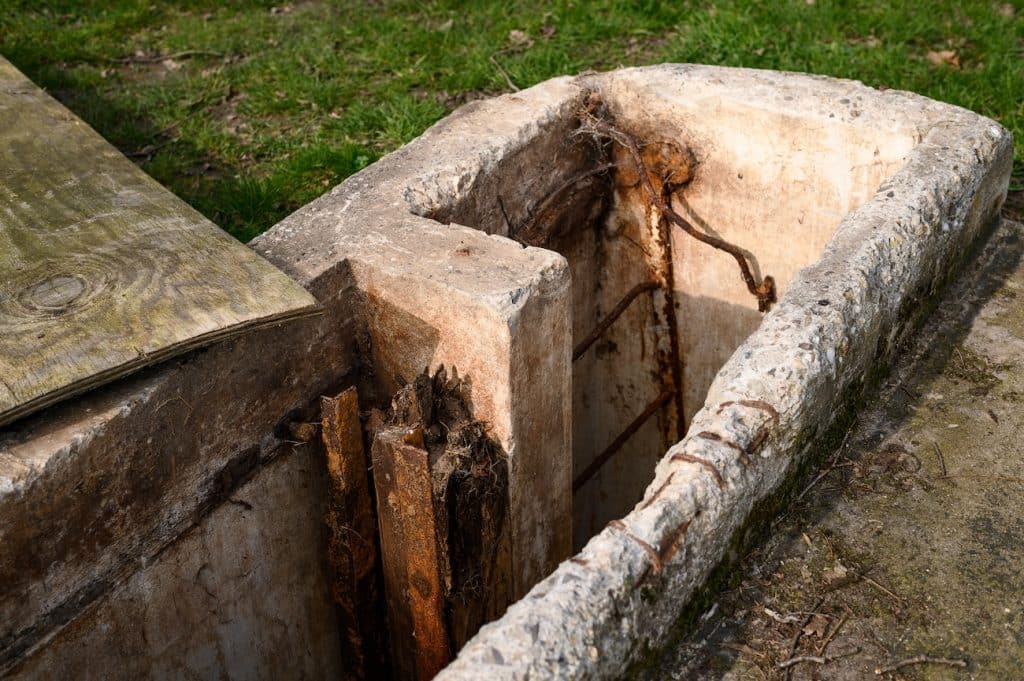
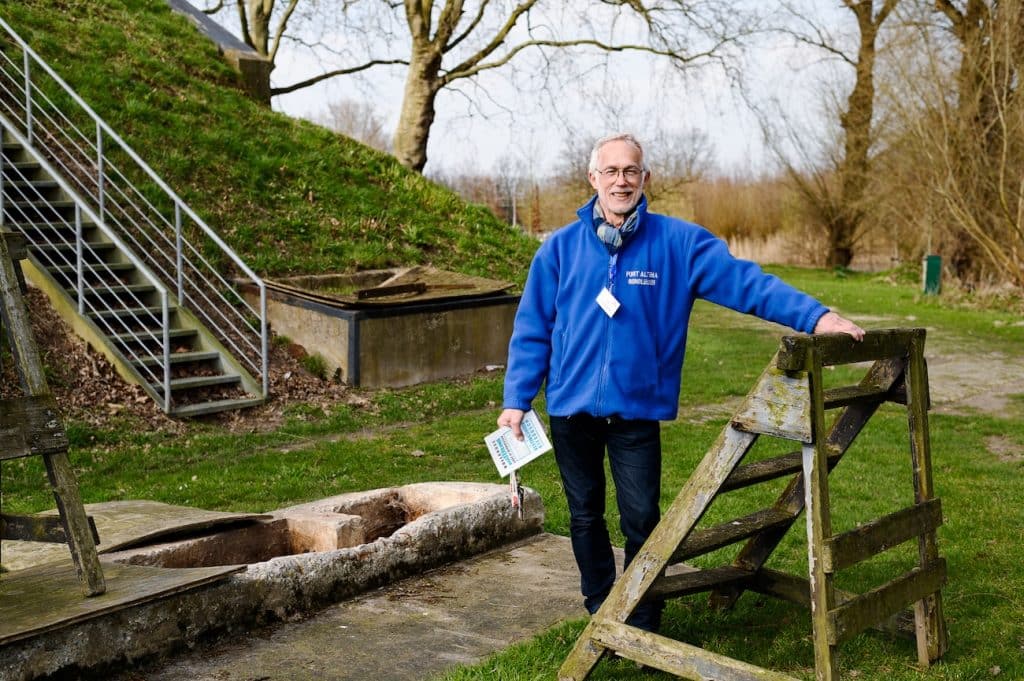
Over time, the police also practiced here, until the Brabants Landscape was given responsibility for the fort twenty years ago. The Berlin Wall had fallen, the threat from the east disappeared.
Excavated ramparts were restored, therefore two Mob sheds had to be demolished. The third one was in good condition and is now used for events. The fort was named 'Fort Altena'. Volunteers like Arie give regular tours and can enthusiastically explain all the history that can be found here.
Would you also like to see the remains of the bailey bridge and take a tour of Fort Altena?
April 20 and 21 is Defense Heritage Weekend, Fort Altena is open for viewing both days, guides will be on hand.
- Guided tour Fort Altena, book a guided tour at Fort Altena. The brasserie is open Friday, Saturday and Sunday from 10:30 am to 5 pm. Always check the website in advance for any modified opening hours.
- Sleeuwijkerwaard, walk through the Sleeuwijkerwaard where you will find the remains of the bailey bridge. Parking is available at Brasserie Boven de Rivieren.
- Above the Rivers, after a brisk walk, you can enjoy lunch at the brasserie. Open Wednesday through Sunday from 11 a.m. to 11 p.m.
Text and photos: www.priscavisser.nl. Here you will find all of Prisca's blogs.